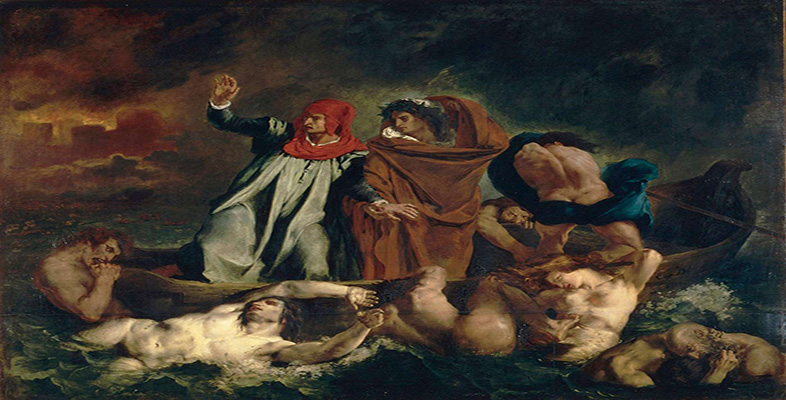2.4 Controversial colour and composition – exercise
In order to understand the furore created by Sardanapalus it will be helpful to compare the work with others more acceptable to the domain of public art. With this in mind, you are asked here to work on two short exercises designed to explore the radical nature of Delacroix’s deathbed scene. In each case, you will be asked to compare images and extract their principal similarities and differences.
Exercise 1
Compare Delacroix’s Sardanapalus and David’s Andromache mourning Hector (Plates 1 and 3). Make brief comparisons between these paintings, focusing on the general organisation of the picture space; the position of the deathbeds and the use of linear perspective (the use of straight lines that appear to recede into the picture space and converge, thus suggesting depth or distance); and the implied position (if any) of the viewer.
Discussion
The space represented by David’s painting is intelligible, logical and ordered. There is a clear sense of linear perspective in the receding lines of the floor which lead the viewer’s eye into the scene and to an identifiable convergence point or viewer’s ‘eye level’ just above Andromache’s head. The elements of the painting relate clearly to one another in scale so that, for example, it is obvious that Andromache is closer to us than the body of Hector, which is, in turn, closer to us than the background colonnade. There is a clear recession into the depth or distance from the viewer, based on an imagined series of vertical planes or layers slicing through the picture space, rather like parallel vertical slots or dividers in an imaginary three-dimensional box. The deathbed is arranged horizontally along one of these planes so that it offers a dignified profile of the dead hero’s corpse. The two principal figures stand out clearly from a dark, neutral background and are arranged symmetrically so that the overall composition is balanced.
By contrast, Delacroix’s painting offers no clear recession into depth. There is no logical sense of scale or perspective. For example, the woman reclining behind the nude with arching back seems to be too close to her to appear so small. Sardanapalus’s head appears diminutive by comparison with those of the foreground figures. Figures and objects are tumbled together in a way that makes it difficult to say with any confidence which are supposed to be closer to the viewer than others. Look, for example, at the foreground figures, who seem to form a frieze – like a ‘cut-out’ imposed uneasily on the rest of the painting. And finally the floor, far from providing a clear path for the viewer’s eye to follow, seems to cave in at the foot of the painting so that it is difficult to imagine how, for example, the rearing horse has entered the scene at all. The deathbed itself is almost propelled, like a magic carpet, from the top left-hand corner, and slices diagonally through the scene without any clear relationship to the angle of the walls around it. There is no easily identifiable point from which to view this scene, which also appears to have been cropped in an unnatural way, as if the real clues to what is going on are out-of-frame. If anything we, as viewers, are suspended above the chasm apparently about to engulf Sardanapalus’s rich treasures. Faces are painted as if we see them all from the same height – there is no use of foreshortening – and yet we know this cannot possibly be so, as logic would dictate that we view some chins from below, some heads from above.
Click to see Plate 1: Eugène Delacroix,The Death of Sardanapalus [Tip: hold Ctrl and click a link to open it in a new tab. (Hide tip)]
Click to see Plate 3: Jacques-Louis David Andromache mourning Hector
